
Choosing the Right Guitar Neck Profile: A Guide for Guitarists and Bassists
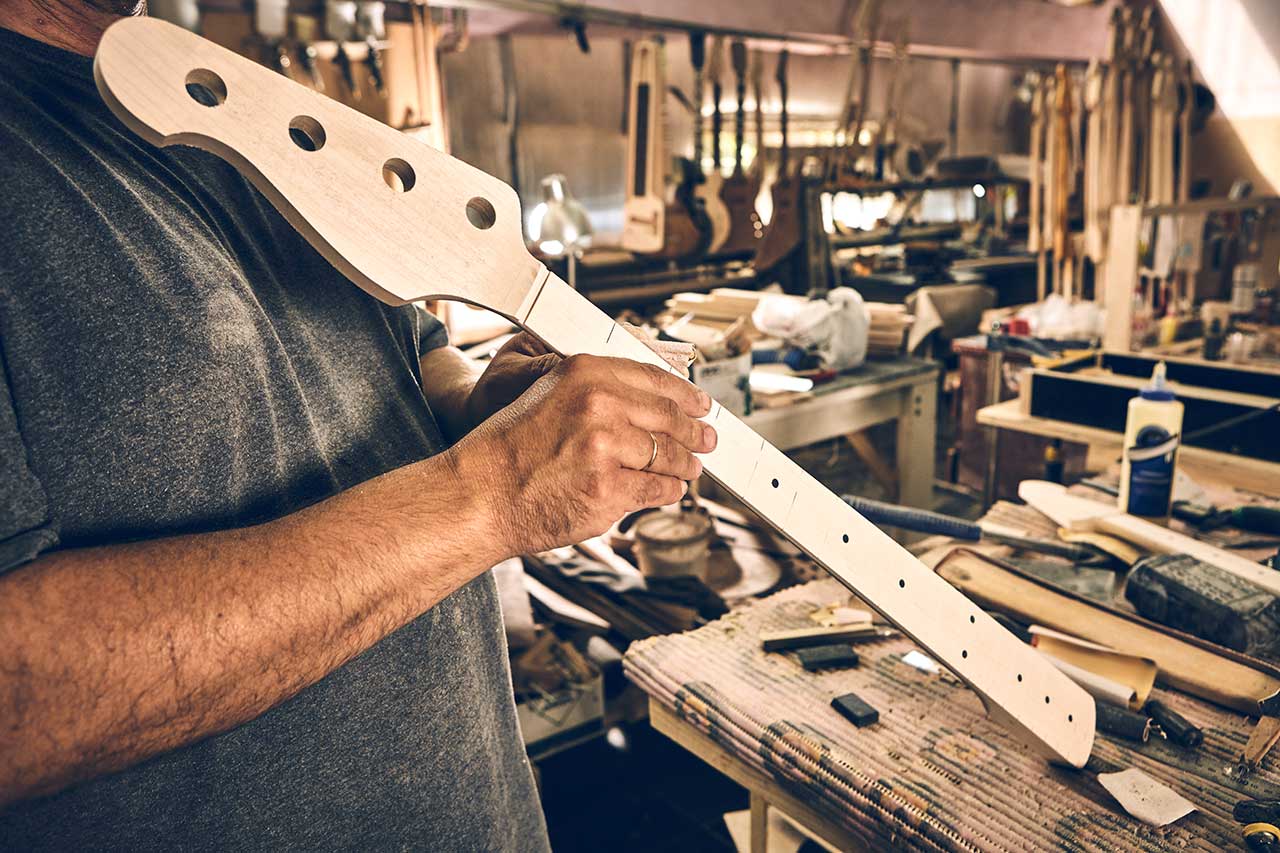
Choosing the Right Guitar Neck Profile: A Guide for Guitarists and Bassists
Choosing the Right Guitar Neck Profile: A Guide for Guitarists and Bassists – Understanding the Different Types of Guitar Neck Profiles
When choosing a guitar, one of the most important factors to consider is the shape of the neck. The neck profile, or shape, can greatly affect the playability and comfort of the guitar. Understanding the different types of guitar neck profiles can help you make an informed decision when choosing a guitar.
The most common neck profiles are the C-shape, V-shape, U-shape, D-shape, and soft V-shape.
The C-shape neck profile is the most popular and versatile of all the neck profiles. It is a rounded shape that is comfortable for most players, and it is suitable for a wide range of playing styles. It’s good for players who like to play with their thumb wrapped around the neck, which is a more traditional technique.
The V-shape neck profile is similar to the C-shape, but it has a sharper V-shape. This neck profile is favored by players who like to play with their thumb on top of the neck, which is a more modern technique. This shape can be a bit more challenging for some players, but it can also provide better access to the upper frets.
The U-shape neck profile is a more rounded shape than the C-shape, and it is comfortable for most players. The U-shape is good for players who like to play with their thumb wrapped around the neck, which is a more traditional technique.
The D-shape neck profile is similar to the U-shape, but it has a sharper D-shape. This neck profile is favored by players who like to play with their thumb on top of the neck, which is a more modern technique. This shape can be a bit more challenging for some players, but it can also provide better access to the upper frets.
The soft V-shape neck profile is a more rounded shape than the V-shape, and it is comfortable for most players. The soft V-shape is good for players who like to play with their thumb wrapped around the neck, which is a more traditional technique.
Another type of neck profile is the compound radius neck profile, which is a combination of different radii across the width of the neck, typically flattening out as you move up the neck. This allows for easy playing of chords near the nut, and easy soloing near the upper frets.
Your playing style and personal preference will ultimately determine the best neck profile for you. It’s crucial to try out different options before making a final decision and purchasing a guitar, and consulting with a luthier can offer valuable guidance.
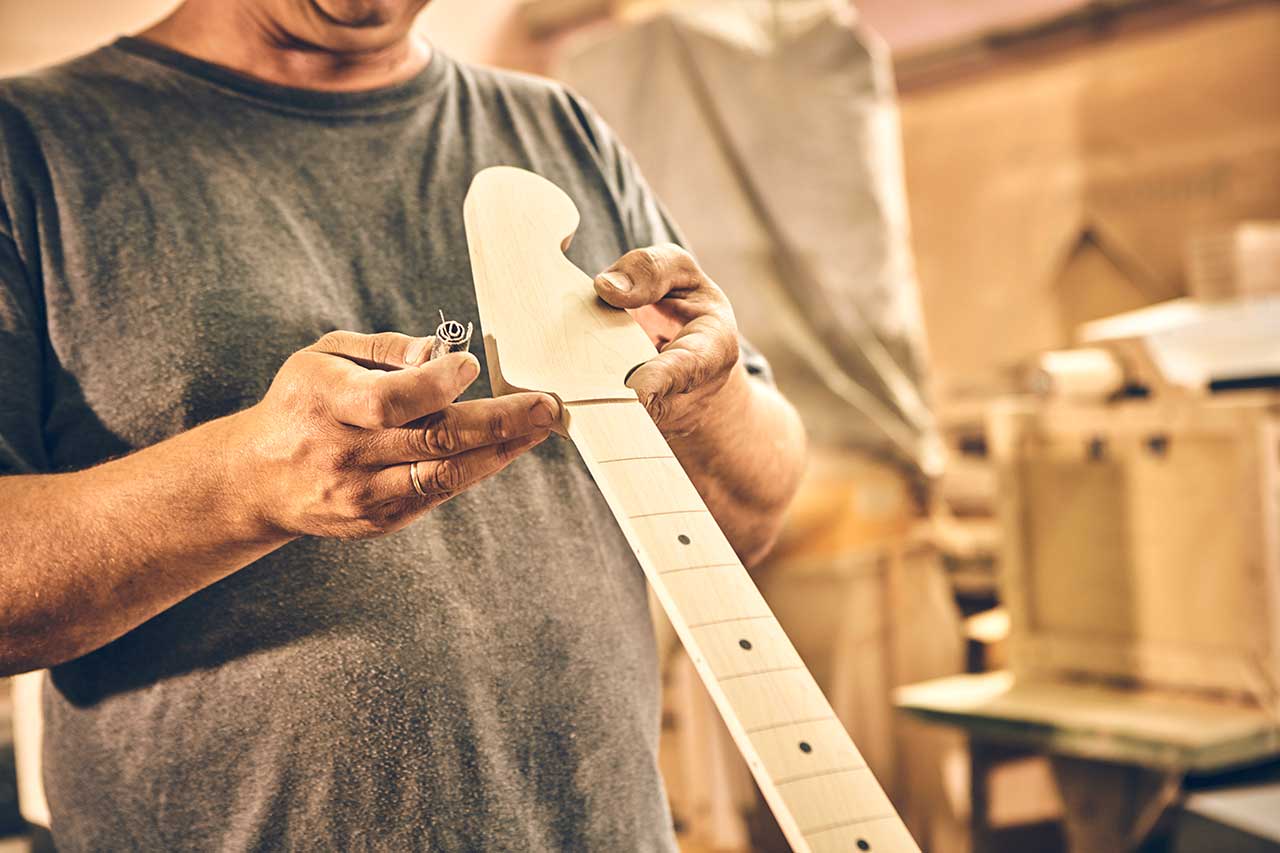
Choosing the Right Guitar Neck Profile: A Guide for Guitarists and Bassists – How the Neck Profile Affects Playability and Comfort
The shape of a guitar’s neck, also known as the neck profile, can greatly affect both the playability and comfort of the instrument. Different neck profiles have different characteristics that can make certain techniques and styles of playing easier or harder, and can also impact the overall feel of the guitar.
When it comes to playability, the neck profile can affect the ease of reaching the upper frets, the ability to perform certain techniques such as bending or vibrato, and the overall feel of the neck in the hand. A neck that is too thick or too thin can make playing difficult and uncomfortable, and can also impact the tone of the guitar.
For example, a V-shape neck profile is typically more slender and can make it easier to reach the upper frets and perform techniques such as string bending, while a U-shape profile will be wider and can be more comfortable for players who like to wrap their thumb around the neck and play with a more traditional technique.
A compound radius neck profile, as it flattens out as you move up the neck, can provide a comfortable feel for both chord playing near the nut and soloing near the upper frets.
Comfort is also a key factor in the neck profile. A neck that is too thick or too thin can cause hand fatigue and discomfort, and can make playing for long periods of time difficult. A neck that is too rounded or too sharp can also cause discomfort. A neck that is comfortable for one player may not be comfortable for another, and personal preference is a major factor in determining the right neck profile for a player.
When it comes to finding the ideal neck profile, it’s important to keep in mind that one size does not fit all. Try out different options and consider your own playing style and preferences, and don’t hesitate to seek advice from a knowledgeable luthier.

The C-Shape Neck Profile
The C-shape neck profile is one of the most popular and versatile neck profiles for guitars. It is characterized by its rounded shape, which is comfortable for most players and suitable for a wide range of playing styles.
The C-shape neck profile is a good option for players who like to play with their thumb wrapped around the neck, which is a more traditional technique. The rounded shape of the neck allows for a comfortable grip and easy access to all frets. This makes it a great option for players who like to play chords and lead guitar.
This neck profile is also popular among players who play different genres of music, such as rock, blues, and jazz. It’s a versatile neck profile that can accommodate different playing styles and techniques.
The C-shape neck profile is also great for players who have smaller hands, as the rounded shape allows for a comfortable grip and easy access to all frets. This can make it easier for these players to perform techniques such as string bending and vibrato.
The C-shape neck profile is also often found on electric guitars, and it’s a very popular option among players who prefer a comfortable and easy-to-play instrument.
In general, the C-shape neck profile is a great option for players who are looking for a comfortable and versatile instrument that can accommodate different playing styles and techniques. It’s a popular option among players of all skill levels and is a good choice for players who want a guitar that is easy to play and comfortable to hold.
It’s essential to consider your own playing style and personal preference when choosing a neck profile. Trying out different options before making a decision, and consulting with a luthier for expert guidance, can ensure you find the best fit for you.

The V-Shape Neck Profile
The V-shape neck profile is a popular option among guitar players, characterized by its sharp V-shape. This neck profile is favored by players who like to play with their thumb on top of the neck, which is a more modern technique.
The V-shape neck profile is similar to the C-shape neck profile, but it has a sharper V-shape. This shape can be a bit more challenging for some players, but it can also provide better access to the upper frets. The sharp V-shape allows for a more slender neck and can make it easier to reach the higher frets, which can be beneficial for soloing and playing fast runs.
This neck profile is also popular among players who play different genres of music such as metal and hard rock, as the V-shape allows for fast and precise playing.
However, it’s important to keep in mind that the V-shape neck profile may not be as comfortable for some players, as the sharp V-shape can cause hand fatigue and discomfort for some players, especially for those who play for long periods of time.
The V-shape neck profile is also often found on electric guitars, and it’s a popular option among players who prefer a more modern and fast-playing instrument.
In general, the V-shape neck profile is a great option for players who are looking for a more modern and fast-playing instrument. It’s a popular option among players who play different genres of music such as metal and hard rock, as the V-shape allows for fast and precise playing.
The right neck profile for you will depend on your individual playing style and preferences. Trying out a variety of options, and consulting with a luthier for professional advice, can help ensure you make the best choice.
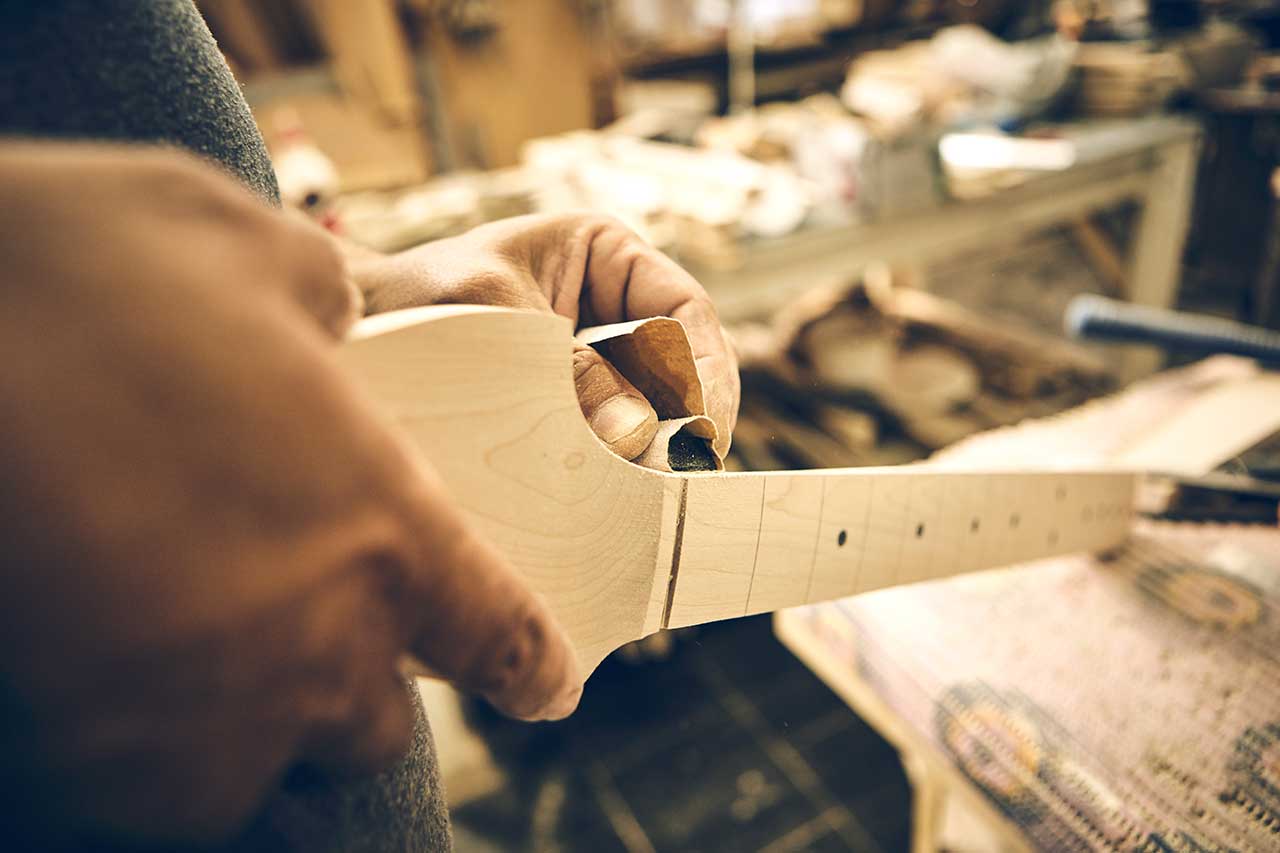
The U-Shape Neck Profile
The U-shape neck profile is a popular option among guitar players, characterized by its rounded shape, which is similar to a “U” shape. This neck profile is comfortable for most players and is good for players who like to play with their thumb wrapped around the neck, which is a more traditional technique.
The U-shape neck profile is similar to the C-shape neck profile, but it has a more rounded shape. The rounded shape of the U-shape allows for a comfortable grip and easy access to all frets. This makes it a great option for players who like to play chords and lead guitar.
This neck profile is also popular among players who play different genres of music such as blues, jazz, and folk. It’s a versatile neck profile that can accommodate different playing styles and techniques.
The U-shape neck profile is also great for players who have larger hands, as the rounded shape allows for a comfortable grip and easy access to all frets. This can make it easier for these players to perform techniques such as string bending and vibrato.
The U-shape neck profile is also often found on electric and acoustic guitars, and it’s a popular option among players who prefer a comfortable and easy-to-play instrument.
In general, the U-shape neck profile is a great option for players who are looking for a comfortable and versatile instrument that can accommodate different playing styles and techniques. It’s a popular option among players of all skill levels and is a good choice for players who want a guitar that is easy to play and comfortable to hold.
Your playing style and preferences are unique, and the best neck profile for you will depend on those factors. It’s important to try out different options before making a decision, and seeking the advice of a skilled luthier can be extremely beneficial.
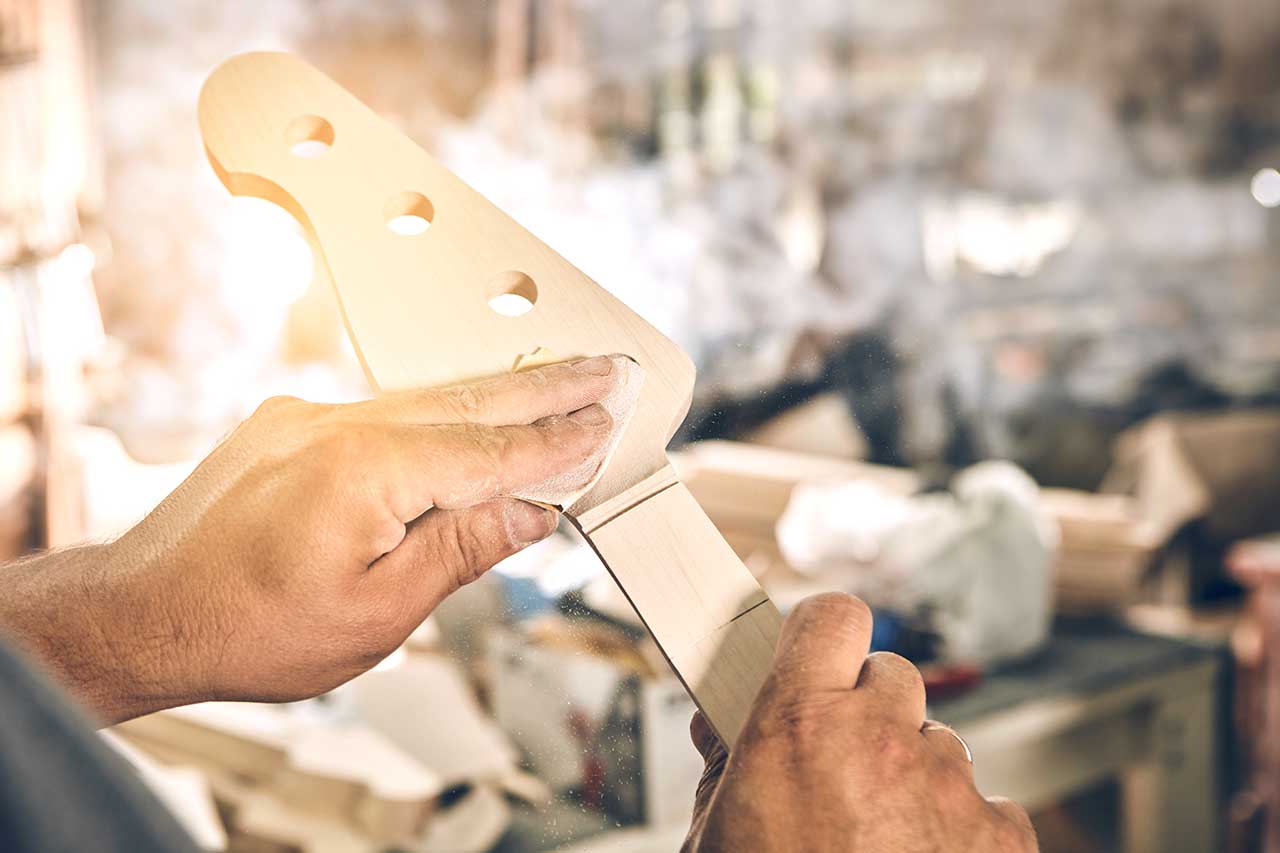
The D-Shape Neck Profile
The D-shape neck profile is a popular option among guitar players, characterized by its sharp D-shape. This neck profile is favored by players who like to play with their thumb on top of the neck, which is a more modern technique.
The D-shape neck profile is similar to the U-shape neck profile, but it has a sharper D-shape. This shape can be a bit more challenging for some players, but it can also provide better access to the upper frets. The sharp D-shape allows for a more slender neck and can make it easier to reach the higher frets, which can be beneficial for soloing and playing fast runs.
This neck profile is also popular among players who play different genres of music such as rock, blues, and jazz. It’s a versatile neck profile that can accommodate different playing styles and techniques.
The D-shape neck profile is also great for players who have smaller hands, as the sharp D-shape allows for a comfortable grip and easy access to all frets. This can make it easier for these players to perform techniques such as string bending and vibrato.
The D-shape neck profile is also often found on electric and acoustic guitars, and it’s a popular option among players who prefer a comfortable and easy-to-play instrument.
In general, the D-shape neck profile is a great option for players who are looking for a comfortable and versatile instrument that can accommodate different playing styles and techniques. It’s a popular option among players of all skill levels and is a good choice for players who want a guitar that is easy to play and comfortable to hold.
However, it’s important to keep in mind that the D-shape neck profile may not be as comfortable for some players, as the sharp D-shape can cause hand fatigue and discomfort for some players, especially for those who play for long periods of time. It’s always a good idea to try out different neck profiles before making a decision and buying a guitar. To make an informed decision, try out different options and consider consulting a luthier for expert guidance.
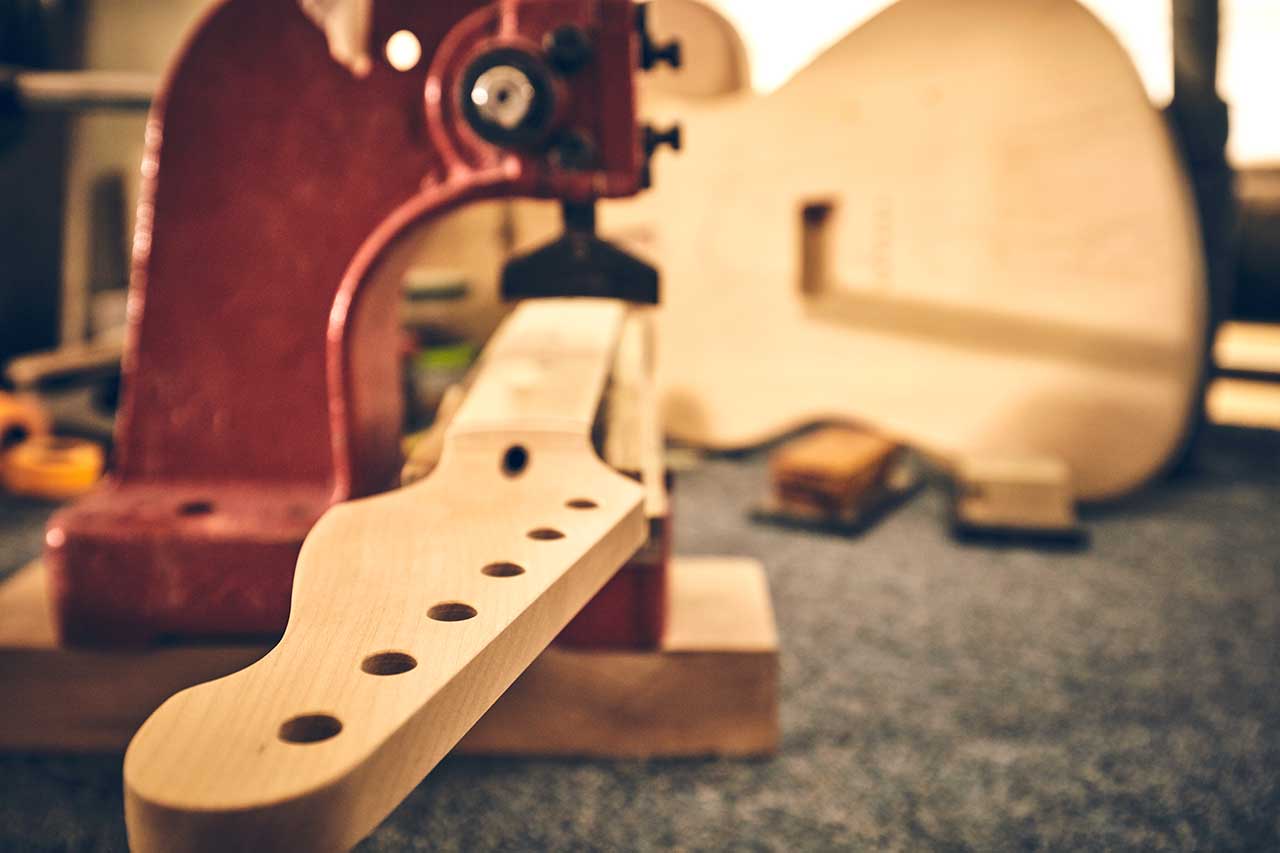
The Soft V-Shape Neck Profile
The soft V-shape neck profile is a popular option among guitar players, characterized by its more rounded shape compared to the traditional V-shape neck profile. This neck profile is comfortable for most players and is good for players who like to play with their thumb wrapped around the neck, which is a more traditional technique.
The soft V-shape neck profile is similar to the V-shape neck profile, but it has a more rounded shape. The rounded shape of the soft V-shape allows for a comfortable grip and easy access to all frets. This makes it a great option for players who like to play chords and lead guitar.
This neck profile is also popular among players who play different genres of music such as rock, blues, and jazz. It’s a versatile neck profile that can accommodate different playing styles and techniques.
The soft V-shape neck profile is also great for players who have smaller hands, as the rounded shape allows for a comfortable grip and easy access to all frets. This can make it easier for these players to perform techniques such as string bending and vibrato.
The soft V-shape neck profile is also often found on electric and acoustic guitars, and it’s a popular option among players who prefer a comfortable and easy-to-play instrument.
In general, the soft V-shape neck profile is a great option for players who are looking for a comfortable and versatile instrument that can accommodate different playing styles and techniques. It’s a popular option among players of all skill levels and is a good choice for players who want a guitar that is easy to play and comfortable to hold, but with the added benefit of the improved upper fret access that a V-shape profile can offer.
When it comes to finding the perfect neck profile for your guitar, it’s essential to take into account your playing style and personal preference. Trying out different options, and consulting with a luthier for additional advice, can help ensure you make the best decision for your needs.
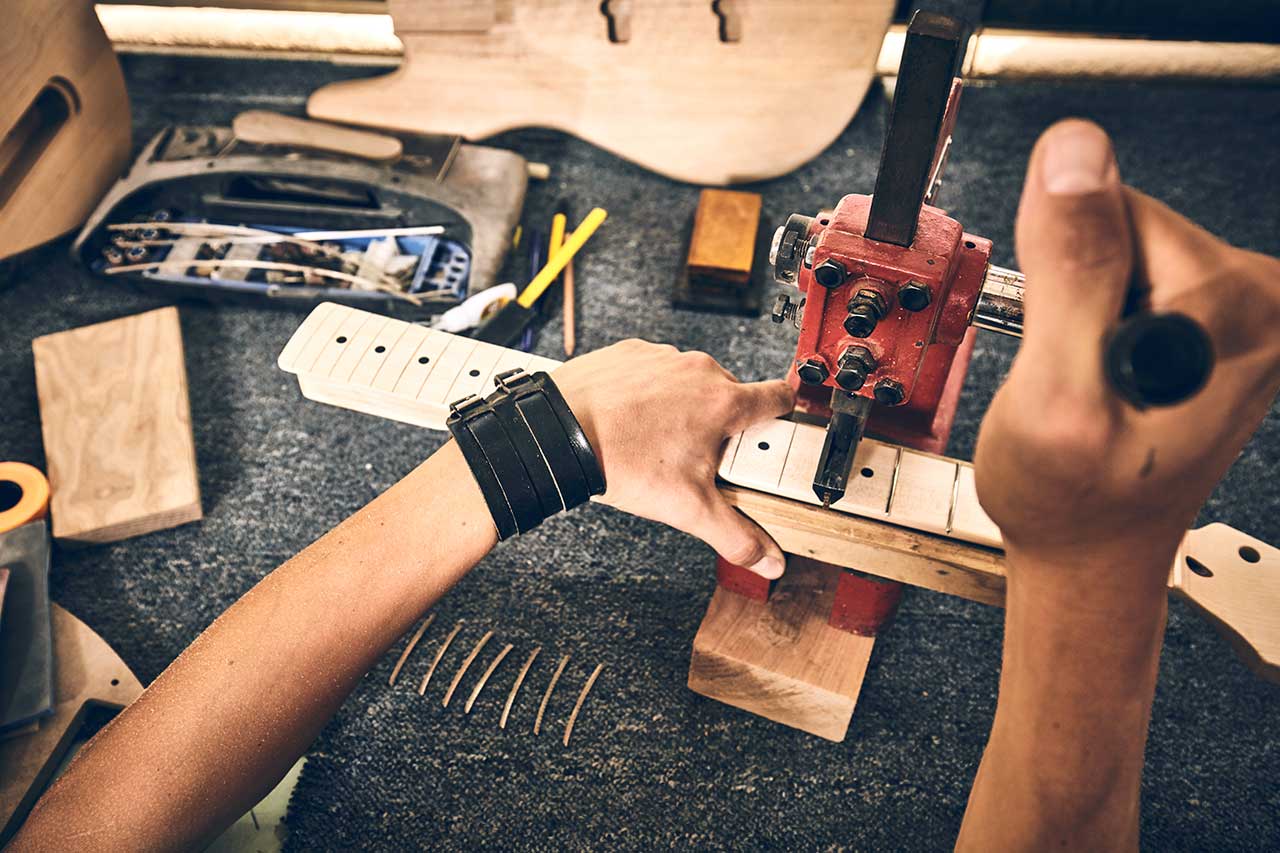
The Compound Radius Neck Profile
The compound radius neck profile is a unique type of neck profile that combines different radii across the width of the neck, typically flattening out as you move up the neck. This design allows for easy playing of chords near the nut, and easy soloing near the upper frets.
With a traditional neck profile, the radius (or curvature) is the same across the entire width of the neck, which can make it difficult for some players to play chords near the nut or solo on the higher frets. This is where the compound radius comes in, it helps to solve this problem by providing a comfortable and easy-to-play neck for different type of playing styles and techniques.
The compound radius neck profile is often found on electric guitars, it’s a popular option among players who play different genres of music such as rock, blues, metal, and jazz. It’s a versatile neck profile that can accommodate different playing styles and techniques, it’s especially popular among players who play fast runs and solos, because the flatter radius in the upper frets allows for easy and precise playing.
Additionally, players with larger hands may find the compound radius neck profile to be more comfortable because of the flatter radius near the upper frets allows for a more comfortable grip and easy access to all frets.
In general, the compound radius neck profile is a great option for players who are looking for a comfortable and versatile instrument that can accommodate different playing styles and techniques. It’s a popular option among players of all skill levels and is a good choice for players who want a guitar that is easy to play and comfortable to hold, with the added benefit of the improved upper fret access that a compound radius profile can offer.
The key to finding the right neck profile for you is to consider your personal playing style and preferences. Trying out different options before making a final decision and consulting with a luthier for expert guidance can help ensure you find the perfect fit.

Choosing the Right Guitar Neck Profile: A Guide for Guitarists and Bassists – Finding the Right Neck Profile for Your Playing Style
Finding the right neck profile for your playing style is crucial to ensuring a comfortable and enjoyable playing experience. The neck profile, or shape, of a guitar can greatly affect the playability and comfort of the instrument, and different neck profiles have different characteristics that can make certain techniques and styles of playing easier or harder.
When it comes to playability, the neck profile can affect the ease of reaching the upper frets, the ability to perform certain techniques such as bending or vibrato, and the overall feel of the neck in the hand. A neck that is too thick or too thin can make playing difficult and uncomfortable, and can also impact the tone of the guitar.
For example, a V-shape neck profile is typically more slender and can make it easier to reach the upper frets and perform techniques such as string bending, while a U-shape profile will be wider and can be more comfortable for players who like to wrap their thumb around the neck and play with a more traditional technique.
Similarly, a compound radius neck profile can provide a comfortable feel for both chord playing near the nut and soloing near the upper frets.
Comfort is also a key factor in the neck profile. A neck that is too thick or too thin can cause hand fatigue and discomfort, and can make playing for long periods of time difficult. A neck that is too rounded or too sharp can also cause discomfort.
It’s important to consider your playing style and personal preference when choosing a neck profile. If you prefer to play with your thumb wrapped around the neck and play with a more traditional technique, a U-shape or C-shape neck profile may be a better option for you. If you prefer to play with your thumb on top of the neck and play with a more modern technique, a V-shape or D-shape neck profile may be a better option.
Ultimately, the best way to find the right neck profile for your playing style is to try out different options. Most guitar stores will have a variety of guitars with different neck profiles available for you to test out. You can also try playing different guitars at music events, guitar shows or even borrowing from friends.
It’s important to keep in mind that the right neck profile for you may not be the same as what works for other players. Your playing style and personal preferences are unique, and it’s important to find a neck profile that feels comfortable and allows you to play the way you want to.
Choosing the right neck profile is a personal decision that depends on your playing style and preferences. To make the best choice, try out different options and consider seeking advice from a professional luthier.

Choosing the Right Guitar Neck Profile: A Guide for Guitarists and Bassists – Tips for Trying Out Different Neck Profiles Before Buying a Guitar
When it comes to buying a guitar, the neck profile is an important factor to consider. The shape of the neck can greatly affect both the playability and comfort of the instrument, so it’s important to find the right neck profile for your playing style and personal preference. Here are some tips for trying out different neck profiles before buying a guitar:
- Play a variety of guitars with different neck profiles: Most guitar stores will have a variety of guitars with different neck profiles available for you to test out. Take advantage of this opportunity and play as many different guitars as possible to get a feel for the different neck profiles.
- Try out different genres of music: Different neck profiles can be better suited for different genres of music. For example, a V-shape neck profile may be better for playing metal and hard rock, while a U-shape neck profile may be better for playing blues and jazz. Try playing different genres of music on the guitars you’re trying out to get a sense of how the neck profile affects your playing.
- Be mindful of your playing style: Consider your playing style and personal preference when trying out different neck profiles. If you prefer to play with your thumb wrapped around the neck, a U-shape or C-shape neck profile may be a better option for you. If you prefer to play with your thumb on top of the neck, a V-shape or D-shape neck profile may be a better option.
- Take note of your comfort level: The most important thing is to find a neck profile that feels comfortable and allows you to play the way you want to. Take note of any discomfort or hand fatigue you experience when playing the guitar.
- Consider the overall feel of the guitar: The neck profile is just one aspect of the guitar, consider the overall feel of the guitar when trying out different options. The guitar should feel comfortable in your hands and should be easy to play. Make sure to pay attention to the weight, balance, and overall ergonomics of the guitar.
- Don’t be afraid to experiment: Don’t be afraid to try out different neck profiles that may be outside of your comfort zone. You may be surprised by how a neck profile that you initially thought wouldn’t work for you, actually feels comfortable and allows you to play better.
- Ask for advice: Don’t hesitate to ask for advice from more experienced players or guitar professionals. They may have valuable insights and advice on which neck profile would be best for your playing style and personal preference.
In conclusion, trying out different neck profiles before buying a guitar is an essential step in finding the right guitar for you. Take the time to experiment with different options, be mindful of your playing style and personal preference, and don’t be afraid to ask for advice from more experienced players or guitar professionals. With these tips in mind, you’ll be well on your way to finding the perfect guitar with the right neck profile for you. Try out different options and consider seeking advice from a professional luthier!
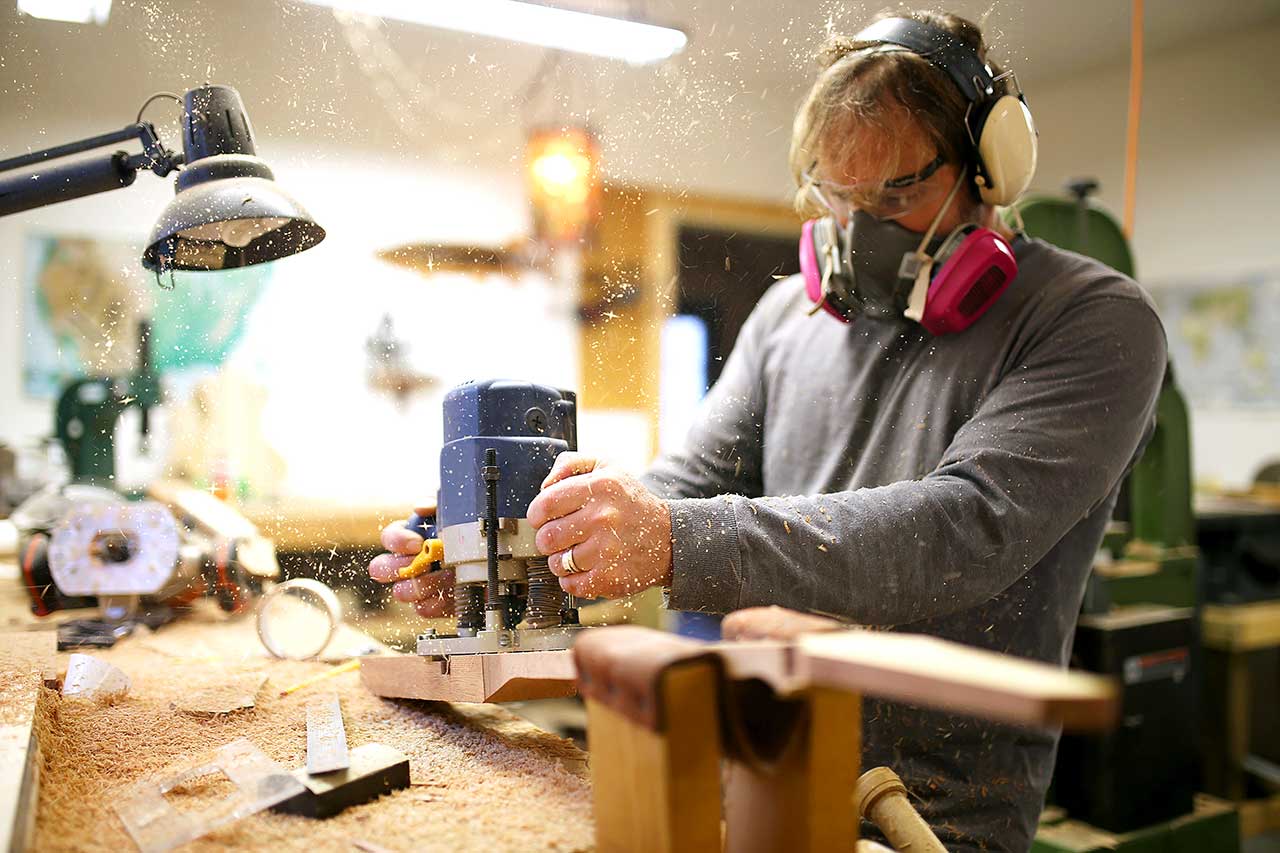
Consulting a Luthier: An Essential Step in Finding the Perfect Neck Profile for Your Guitar and Bass
In conclusion, choosing the right guitar neck profile is crucial for a comfortable and enjoyable playing experience. The shape of the neck can greatly affect the playability and comfort of the instrument, and different neck profiles have different characteristics that can make certain techniques and styles of playing easier or harder. It’s important to consider your playing style and personal preference when choosing a neck profile.
It’s recommended to try out different neck profiles and genres of music on different guitars before making a decision. It’s also important to take note of your comfort level and the overall feel of the guitar. Experimenting with different options, including neck profiles outside of your comfort zone, may lead to finding the perfect guitar for you.
It’s worth mentioning that seeking the help of a luthier can be a great asset for guitarists looking for specific advice and guidance on choosing the right neck profile. Luthiers, with their extensive experience in repairing and building guitars, have had the opportunity to handle a wide variety of instruments, and as such, are well placed to offer relevant and useful advice to guitarists.

Choosing the Right Guitar Neck Profile: A Guide for Guitarists and Bassists – We can help you find your next luthier instrument!
In the coming weeks, as for others luthiers for plucked string instruments, luthiers for bowed string instruments, luthiers for other instruments, amps & effects makers, wood & supplies dealers, lutherie events, jobs, schools & teachers subscribers on our site, you will be able to follow our series of mini-interviews dedicated to the fascinating world of luthiers.
If you want some fun to discover our luthiers, also take a look and subscribe to our Instagram : @luthierscom and Facebook : @luthierscom accounts.
See you soon…
#luthiers
Subscribe to the newsletter!
Subscribe to our newsletter to follow all our news and those of our luthiers.
If you are passionate about the world of luthiers, join us!